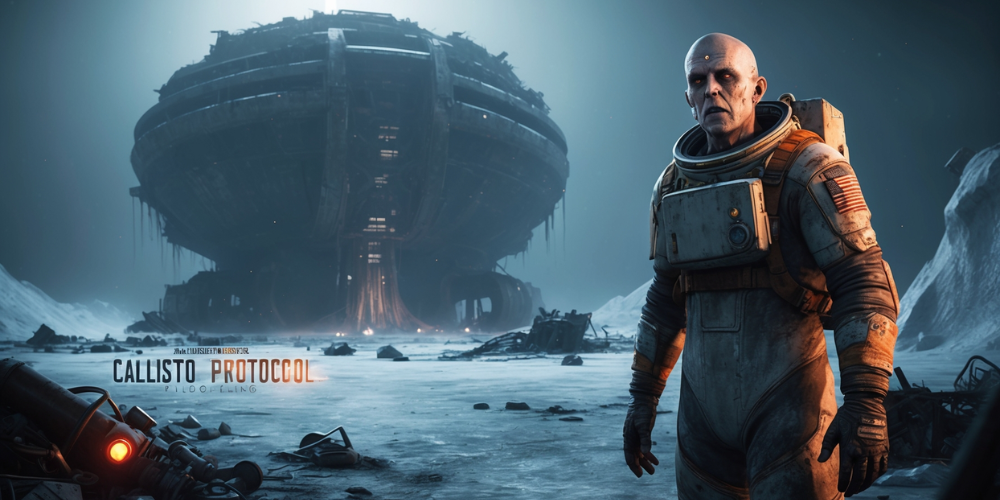
Navigating Hurdles: Glen Schofield's Insights on The Callisto Protocol and the Challenges of Game Development
- 02 Sep 2024
- Ayten de Goede
In the ever-evolving landscape of the gaming industry, the tales of triumph and tribulation often intertwine, with developers striving to deliver compelling narratives while navigating the challenges of production and market expectations. Glen Schofield, a prominent figure in game development known for his work on the "Dead Space" series, has shared invaluable insights into the struggles faced during the creation of "The Callisto Protocol." This article delves deeply into the hurdles encountered, the project's ambitious vision, and the reflections on what could have been—a true examination of the delicate balance between creative aspirations and corporate realities.
A Grand Ambition
As the mastermind behind "Dead Space," Glen Schofield embarked on creating "The Callisto Protocol," a bold attempt to merge horrifying elements with compelling gameplay. Upon founding Striking Distance Studios, he envisioned a project that would serve as the foundation for an expansive series, much like the progression witnessed with "The Witcher." Schofield made it clear in interviews that the aspirations for "The Callisto Protocol" were not confined to a single title. Instead, the initial conversations hinted at a larger narrative that would unfold over time, paving the way for future installments.
The Financial Paradox
However, as ambitious as the vision was, the financial backdrop presented a stark reality. Schofield disclosed the staggering costs associated with developing "The Callisto Protocol," marking a significant leap from previous endeavors like "Dead Space." The game's production expenses reached four times higher than the earlier title yet were met with minimal increases in retail pricing. "Callisto was about four times what Dead Space cost," Schofield lamented, emphasizing the disconnect between investment and potential return.
The Pressure Cooker
The need for speed became a critical factor in the production timeline. Schofield expressed his desire for additional development time, specifically an extra three and a half months to refine the game further. Initially led to believe that this extended timeline was feasible, he faced an abrupt turnaround that set the stage for turmoil. The pressure mounted as the release date loomed, forcing the team to scramble to meet expectations set by higher-ups.
A Changing Landscape
Part of the struggle stemmed from the shifting dynamics within the company, particularly following its public offering. Schofield cited increased pressure from investors and board members, culminating in a strain on the entire team. The project's trajectory altered, leading to a singular focus on immediate returns rather than nurturing a narrative-rich franchise. This shift highlighted the prevalent issue in the gaming industry, where creative visions often clash with the uncompromising demands of profitability.
The Toll on Health and Morale
The consequences of the hurried development process took a toll not only on the game itself but also on Schofield's personal well-being. He described the last year of development as one of the most challenging periods of his career, fraught with stress that impacted his health. Reports indicated a significant weight loss during this time, a physical manifestation of the strain endured by him and the team as they worked tirelessly on a project fraught with challenges.
The Release and Aftermath
Once "The Callisto Protocol" launched, problems continued to surface. Schofield recounted how the disconnect grew between the development team and upper management, with decisions about downloadable content (DLC) moving forward despite the messy launch. As a result, the team focused on patching and addressing unresolved issues—an ongoing battle that demanded dedication and resources beyond what was originally allocated. Schofield revealed that the team produced a staggering 86 patches in response to player feedback and concerns post-launch.
The Lost Potential
Amid the challenges and constraints, Schofield couldn't shake the feeling of unrealized potential. He conveyed a strong desire for a sequel to "The Callisto Protocol," pointing to the strategic cuts made during production. A sequel could not only complete the narrative threads left dangling but could also integrate the ideas that had to be shelved due to time constraints. He referenced the pandemic's disruptive impacts, noting how the sudden departure of numerous staff members during the industry's "great resignation" presented further complications.
A Vision Denied
Despite his passionate pitches for a sequel, which was meant to unfold as a multi-part series akin to "The Witcher," Schofield faced repeated setbacks. His initial creative vision of an evolving, layered saga was undermined by corporate reluctance to invest in future projects without immediate profitability. "I knew it wasn't gonna happen because they were so insistent that they make the money on the first game," he reflected, mourning the shift in discussions that had transformed ambition into financial caution.
Looking Ahead
As "The Callisto Protocol" settles into the annals of gaming history, it serves as a poignant reminder of the complexities faced by developers in balancing artistic integrity with commercial viability. Though no sequel is currently in the works, the landscape is rich with new horror experiences on the horizon. Schofield's reflections not only encapsulate the struggles behind "The Callisto Protocol" but also illuminate broader trends in the gaming industry, leaving audiences to ponder the "what-ifs" that accompany any ambitious creative endeavor.
In conclusion, the journey of game development is fraught with challenges, but it remains a testament to human creativity and determination. As Glen Schofield moves forward from "The Callisto Protocol," he carries with him valuable lessons that will undoubtedly shape his future endeavors. The lingering hope for a sequel reminds us all that sometimes, the door to future possibilities remains ajar, waiting for the right moment to open once again.





